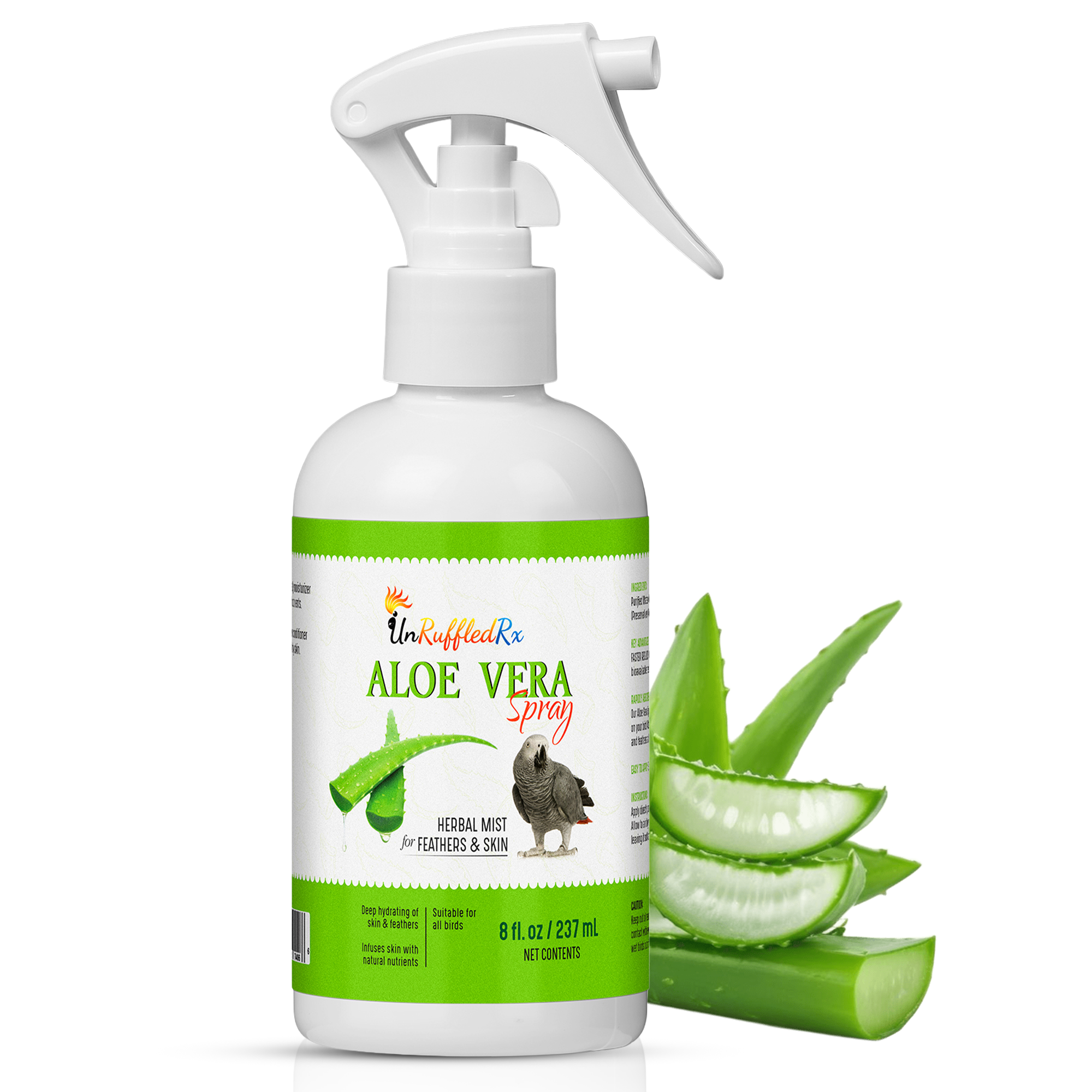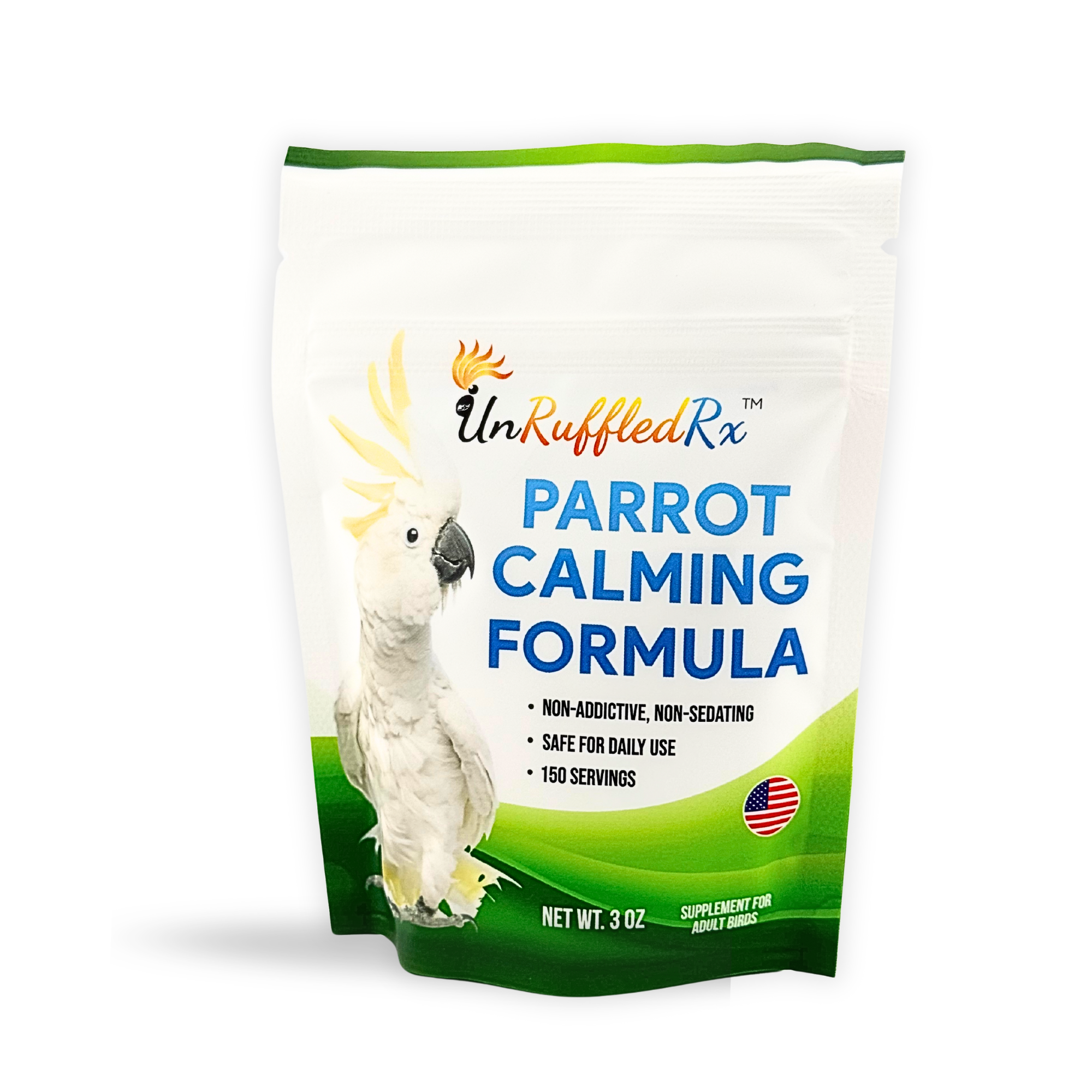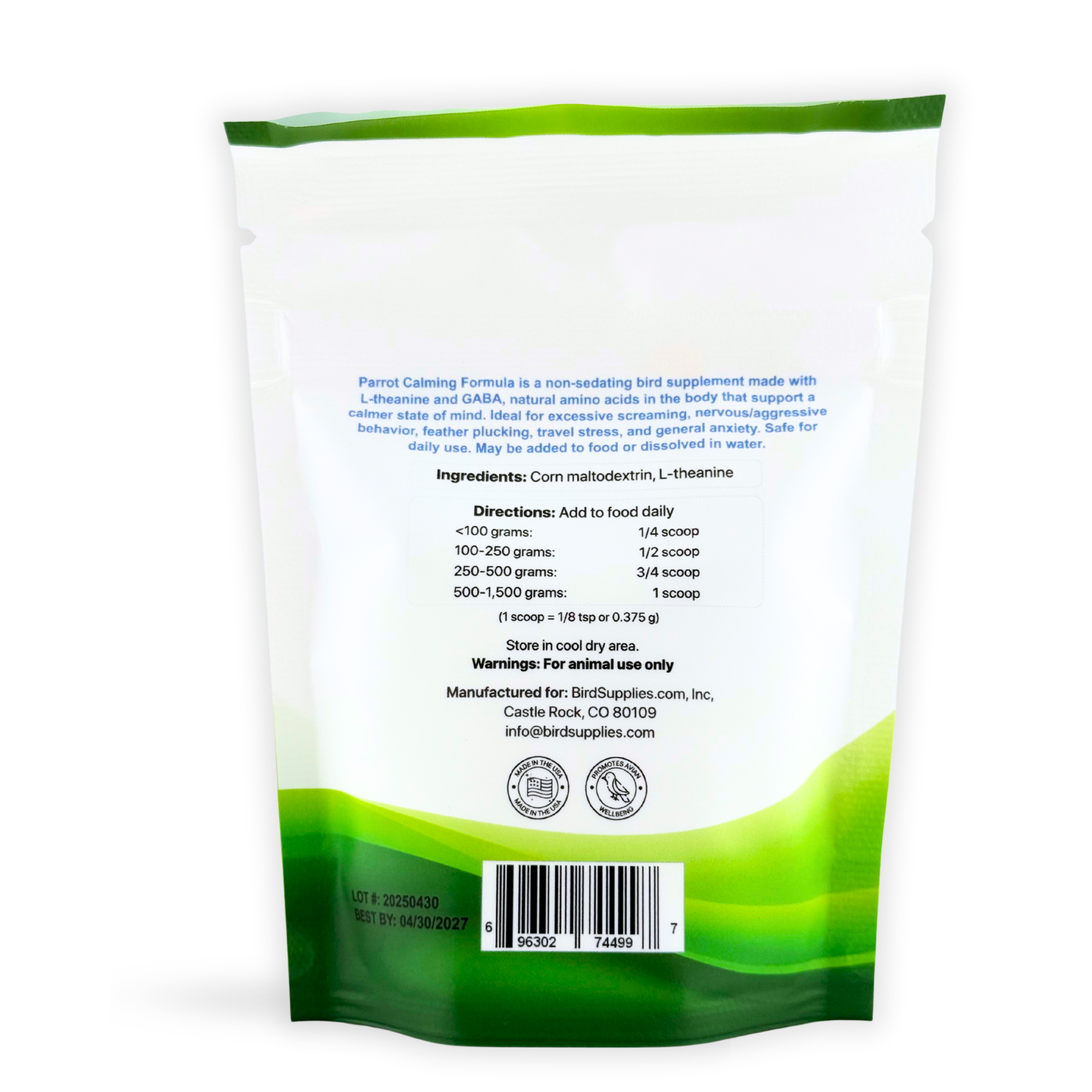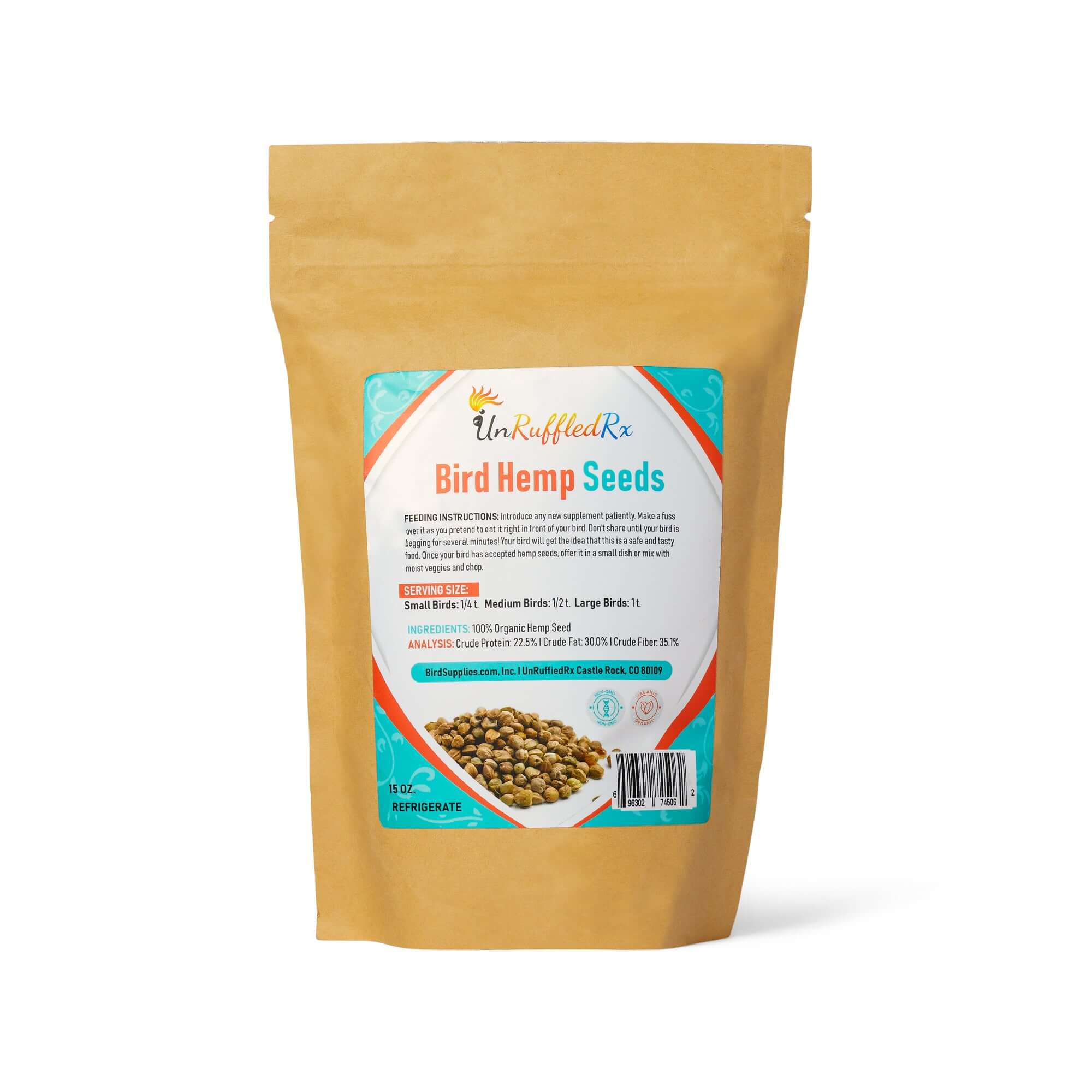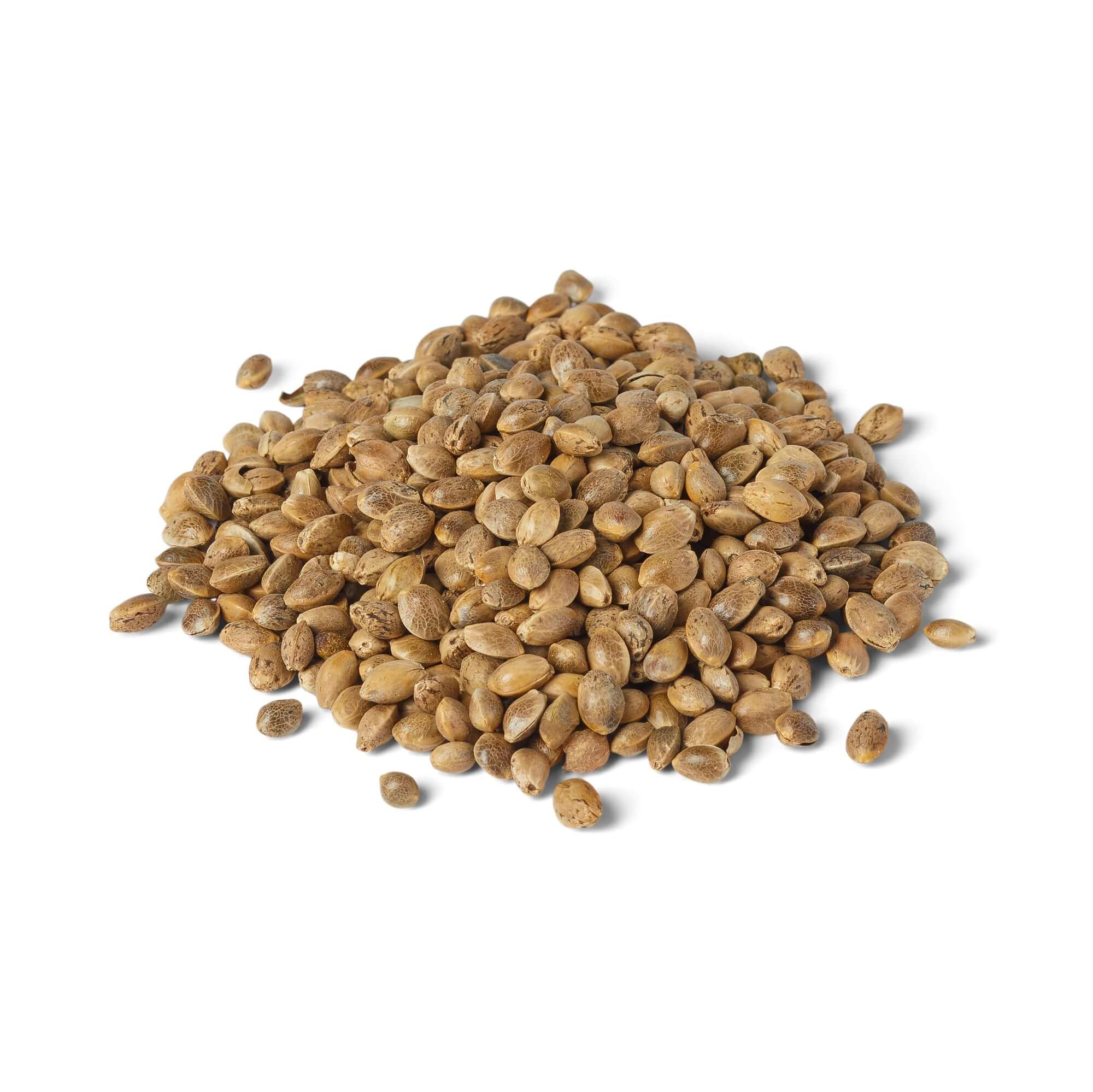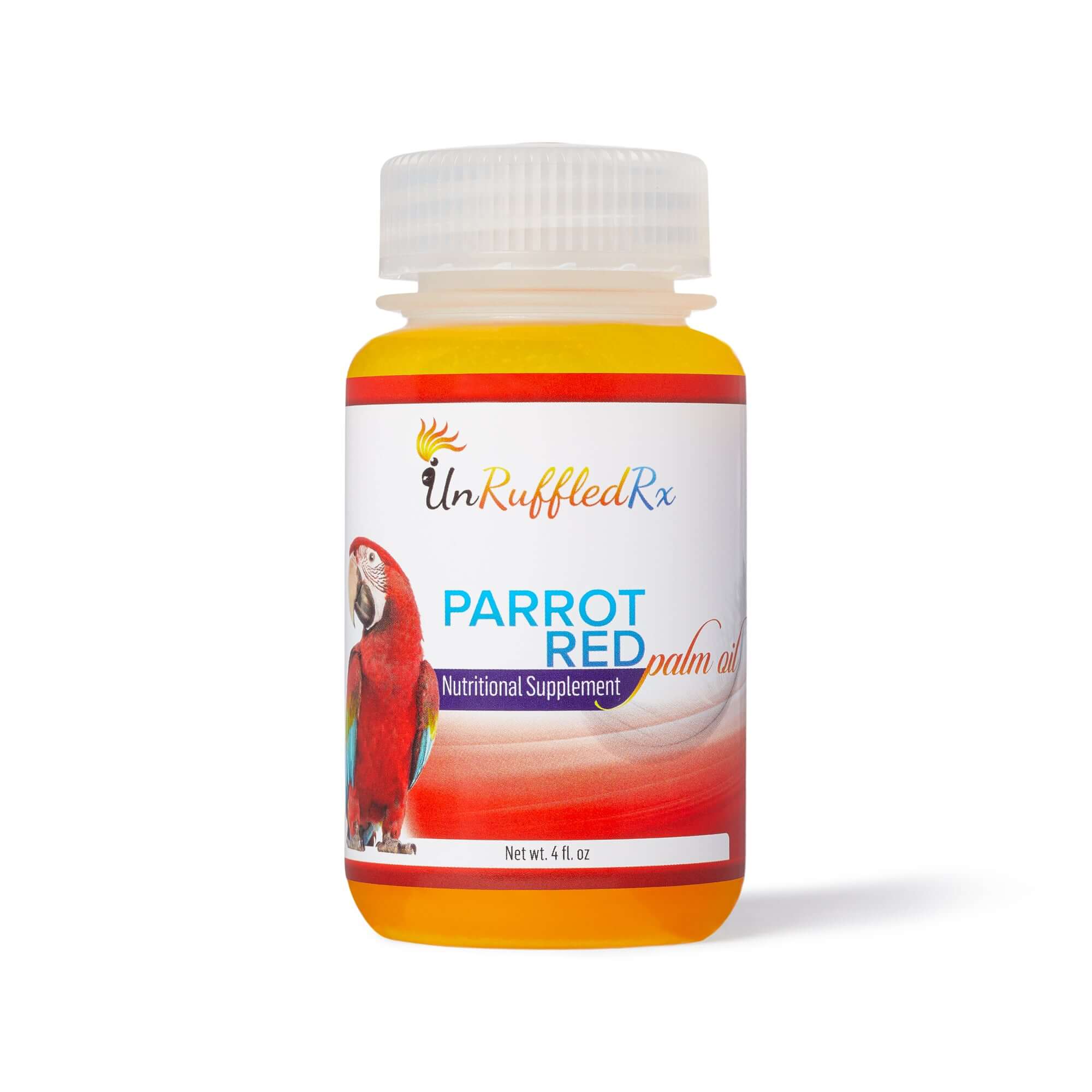Table of Contents
- Understanding Feather Plucking in Parrots
- Healthy Diet and Avian Naturals Nutraceuticals
- Use Positive Reinforcement to Teach New Skills
- Identify & Change Your Bird's Triggers
- Reduce Bird Hormonal Behavior Naturally
- Birds and UV Lighting
- Test Your Knowledge
Discover the best feather plucking remedies that really work for parrots. Feather plucking can be a big problem for bird owners, and it's often caused by health or environmental issues. Understanding why it happens and using effective solutions can help keep your parrot happy and healthy.
In this post, we will look at five easy-to-use remedies to stop feather plucking in parrots. We'll talk about better diets, fixing behavior problems, improving their environment, and using the right lighting. Let's explore these remedies to help your parrot feel better and stay healthy.
1. Understanding Feather Plucking in Parrots
Feather plucking is a common issue among pet parrots and can be very difficult to treat. Fortunately, there are some effective remedies available that can help alleviate the problem. In this blog post, we will discuss the top 5 most effective remedies for feather plucking in parrots. We will cover the pros and cons of each remedy and how to use them properly for the best results.
2. Offer Healthy Diet & Avian Naturals Nutraceuticals
One of the most effective remedies is ensuring that your parrot receives a healthy diet and proper supplements. Feather health depends on good nutrition, and a malnourished parrot is more likely to engage in feather plucking. If your bird is on a seed diet, try to change it to a better diet.
Low vitamin A intake occurs in birds who predominantly eat seeds and nuts. This deficiency affects eye health and skin health. Ensure that your bird's diet includes plenty of fresh fruits and vegetables high in vitamin A. A balanced diet should include around 60-70% pellets, 20% fruits and veggies, and 10% nuts, seeds, and treats.
Nutraceuticals can also be beneficial. For instance, Red Palm Oil is rich in vitamins A and E and omega-3 fatty acids. These nutrients are important for maintaining feather health, and a deficiency in either can lead to feather problems.
Feather plucking can be a sign of underlying health problems, so consult a veterinarian to determine if your parrot has any nutritional deficiencies or an infection. By providing a healthy diet and nutritional supplements, you can help ensure your parrot's overall health and prevent feather plucking.
3. Using Positive Reinforcement To Teach New Skills
Anxiety and attention-seeking behaviors are common triggers for feather plucking. Here are some effective remedies to address these issues:
-
Figure out what triggers bird anxiety: Changes to routines or living arrangements, a new pet, or even just changes in routine can trigger anxiety in birds. Identify these triggers and take steps to minimize or eliminate them.
- Address attention-seeking behaviors: Parrots are social animals that crave attention and interaction with their owners. They may resort to feather plucking to get the attention they desire. Focus on reinforcing desirable behaviors rather than accidentally reinforcing the plucking behavior. Reward your parrot for engaging in alternative behaviors, such as playing with toys or interacting with you positively.
Work with a qualified avian veterinarian or bird behaviorist to develop a customized plan that addresses your parrot's unique needs.
4. Identify & Change Your Bird's Triggers
Parrots are very social and active creatures, and their environment plays a significant role in their well-being. Addressing common environmental factors can be a key remedy for feather plucking in parrots.
One of the most common environmental factors is inadequate out-of-cage time. Parrots that spend less than 8 hours out of their cages per day are at higher risk of developing feather plucking problems. Provide ample time outside of their cages to move around, socialize, and interact with their owners.
Enrichment and socialization are also vital. Parrots that spend less than 4 hours a day playing with toys, interacting with humans or other birds, and engaging in sensory activities are more prone to feather plucking. Provide them with various toys, such as puzzle feeders, foraging toys, and chew toys, to keep them occupied and mentally stimulated.
Changes in routine can also make parrots anxious, leading to feather plucking. Establish a consistent daily routine for your parrot to reduce stress and anxiety and promote a sense of security.
Temperature and humidity can also play a significant role in a parrot's feather plucking. Excessive heat and low humidity can cause dry, itchy skin, leading to excessive preening and feather plucking. Provide your parrot with a comfortable and consistent temperature and humidity level to prevent skin irritation.
Lastly, ensuring your bird gets adequate sleep is essential for overall health and can also help reduce feather plucking. Lack of sleep can affect a bird's mood, immune system, and reproductive health. Provide a dark and quiet sleeping environment to help your parrot get the rest they need.
5. Reduce Bird Hormonal Behavior Naturally
Reproductive behavior can contribute to feather plucking in parrots. Inappropriate human-parrot bonds can stimulate such behavior and increase hormones in these birds. Elevated hormone levels can cause anxiety and angst, particularly during the breeding season.
If you suspect that your parrot's feather plucking is linked to reproductive behavior, try these remedies:
- Reduce the bird's access to nesting materials. Removing these materials or limiting access to them can decrease the bird's urge to nest and reproduce.
- Avoid petting or stroking the parrot on the back, especially around the tail area, as this can stimulate the reproductive urge. Avoid using boxes or containers that resemble nesting boxes, as they can encourage reproductive behavior.
- Consider the light and dark cycle of your parrot's living space. Exposure to natural sunlight can help regulate their hormones and prevent them from entering reproductive phases. Use UVA UVB lighting or provide your bird with access to sunlight through a window for at least a few hours each day.
6. Learn About Birds and UV Lighting
Providing the right lighting conditions for your parrot is crucial for their overall health and well-being. UVA and UVB lighting are essential for feather health and have numerous benefits for your bird.
-
UVA lighting helps to simulate natural daylight and has been shown to improve the mental well-being of birds. It also helps stimulate their appetite and encourages natural behaviors, such as preening.
- UVB lighting is necessary for the production of vitamin D3, which is essential for bone health and calcium metabolism. Without adequate UVB exposure, parrots can develop metabolic bone disease, which can cause skeletal abnormalities and eventually lead to death. They can also develop anxious behaviors and even seizures.
Recent studies have shown that UVA exposure can also decrease feather plucking in parrots. One study on Amazon parrots found that birds exposed to UVA lighting for four hours per day had significantly decreased feather plucking behavior compared to those without UVA exposure.
When selecting lighting for your parrot, make sure to choose a full-spectrum light that includes both UVA and UVB wavelengths. However, it's important to consult with an avian veterinarian to ensure that you are providing the correct type and amount of lighting for your specific bird species.
In Conclusion
Feather plucking is a frustrating issue for many parrot owners. By providing a healthy diet, addressing behavioral and environmental factors, reducing reproductive behavior, and incorporating UVA/UVB lighting, you can significantly reduce or even eliminate feather plucking in your feathered friend.
Always consult with a veterinarian before trying any remedies on your bird, and monitor their progress closely. Here's to happy, healthy birds and their beautiful feathers!
Have a feather plucking success story of your own? Submit Your Own Pet Feather Plucking Success Story and inspire other bird owners on their journey to healthier birds.
Test Your Knowledge!
Feather Plucking Remedies
Related Posts:
Feather Plucking Solutions: Discover Why Your Bird Is Plucking & How To Help It
Feather Plucking in Cockatoos: Tips for a Happier Bird
What is Feather Plucking in Birds?
Feather Plucking Remedies for Parrots
References:
1. Costa, P., Macchi, E., Valle, E., et al. (2016). An association between feather damaging behavior and corticosterone metabolite excretion in captive African grey parrots (Psittacus erithacus). *PeerJ, 4*, e2462. https://doi.org/10.7717/peerj.2462
2. Friedman, S. G. (2009). Behavior fundamentals: Filling the behavior-change toolbox. Behavior Works. Retrieved from Behavior Works
3. Garner, J. P., Meehan, C. L., Famula, T. R., et al. (2006). Genetic, environmental, and neighbor effects on the severity of stereotypies and feather picking in Orange-winged amazon parrots (Amazona amazonica): an epidemiological study. *Applied Animal Behaviour Science, 96*(1–2), 153–168. https://doi.org/10.1016/j.applanim.2005.05.006
4. Grindlinger, H. (1991).*Compulsive feather picking in birds. Archives of General Psychiatry, 48(9), 857. https://doi.org/10.1001/archpsyc.1991.01810330089014
4. Jenkins, J. (2001). Feather picking and self-mutilation of psittacine birds. *Veterinary Clinics of North America: Exotic Animal Practice, 4*(3), 651-667. https://doi.org/10.1016/S1094-9194(17)30127-4
5. Seibert, L. M., Crowell-Davis, S. L., Wilson, H. G., et al. (2004). Placebo-controlled Clomipramine trial for the treatment of feather picking disorder in cockatoos. *Journal of the American Animal Hospital Association, 40*(4), 261–269. https://doi.org/10.5326/0400261
Link to this blog
Burroughs, D. (2024, July 5). The top 6 feather plucking remedies for birds (revised). BirdSupplies.com. https://birdsupplies.com/blogs/news/top-5-feather-plucking-remedies-for-birds
Diane Burroughs, LCSW is a licensed psychotherapist trained in ABA therapy techniques. She specializes in avian anxiety disorders and is certified in Nutrition For Mental Health. Diane has written a number of bird behavior books and she offers behavior consultations. She's developed a range of UnRuffledRx Science-backed Parrot Wellness Supplies.
Diane's products have been featured in the Journal of Avian Medicine and Surgery and at Exoticscon, a conference for exotic pet veterinarians. Her bird collars & supplements are stocked in avian vet clinics and bird stores throughout the US. With over 30 years in the field of behavior, Diane has created thousands of successful individualized behavior plans that help pets thrive.
TAGS: #FeatherPluckingRemedies #HowToTrainAPetBird #FeatherPluckingBirds
SHARING IS CARING! PLEASE SHARE ON YOUR FAVORITE SOCIAL MEDIA NOW!






